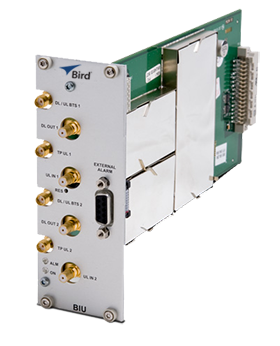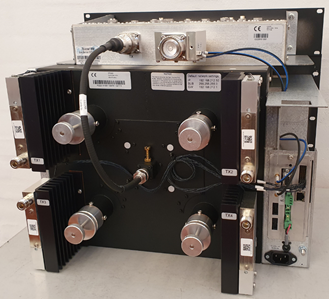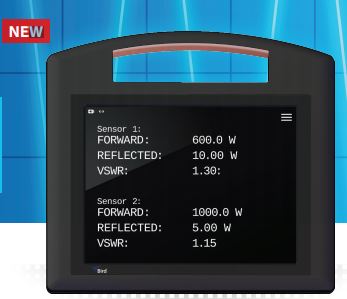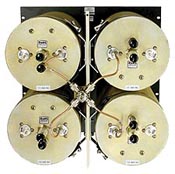Description
The Base Station Interface Unit is the RF interface between the Radio Base Station and the Fiber-DAS system. This unit monitors the signal levels from the base station and has settable attenuators both in the uplink and downlink paths. The BIU connects to the Point of Interconnect (POI) which distributes the signals over the fiberoptic interfaces belonging to the same sector.
KEY FEATURES
Large selection of frequency bands available
Duplex or no duplex as option
Radio access technology agnostic
Multi operator and multi carrier
Two separate RF paths
Options with high or low input depending on type of BTS connection
Test ports for checking signal levels without interrupting service
Completely software monitored and controlled
Settable supervision thresholds for high/low operator input signals
External alarm interface with inputs/outputs
RoHS Compliant
The BIU exists in two versions, high power and low power. Where the specifications are different they are clearly marked for which version the specification is used.
Maximum input power non-destructive, composite: 36 dBm (Standard); 20 dBm (Low Power)
Recommended RF input level, composite: 13 to 33 dBm (Standard); -10 to +10 dBm (Low Power)
Alarm high input level: >33 dBm (Standard); >13 dBm (Low Power)
Alarm low input level: <13 dBm (Standard): <-13 dBm (Low Power) Max gain uplink – 88-990 MHz: 20 dBm (Standard); >20 dBm (Low Power)
Max gain uplink – 1000-2600 MHz: 10 dBm (Standard); >10 dBm (Low Power)
Gain downlink: -13 dBm (Standard); >20 dBm (Low Power)
Attenuation settings uplink and downlink: 0-30 (Standard); dBm 0-30 (Low Power)
Isolation between ports: >60 dB
Isolation between uplink and downlink ports (unduplexed): >70 dB
BTS RF ports/Test ports: SMA F
Interconnecting ports: QMA F
Power Consumption: <15 W
Width/Height: Rack Units, 2/3 U Temperature range operational: Non-condensing, 0-45°C






